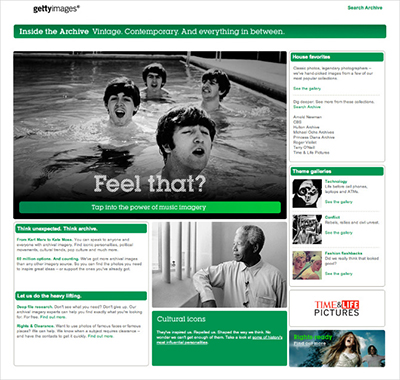

|
What is stock photography?
Stock photography is a billion-dollar business that "produces, promotes, and
distributes ready-made photographic images for use in marketing and advertising"
(Frosh, 2003, 247). These photographic images are licensed for specific use. They are
produced by professional photographers, distributed by stock agencies, and circulated
by clients. Most often, clients consist of advertising creatives and designers who are
looking to incorporate high-quality images into their work. Clients come to stock
agencies with a particular subject and concept in mind for which they wish to purchase.
The photographs exist in an archive that contains a complex classificatory system. Each photograph is key-worded with verbal labels that highlight the subject and concept matter within the frame. This establishes distinct image-categories in which viewers or potential customers are able to search for and access specific visuals they desire. According to Frosh, "the vast majority of them are names of emotions or values rather than of objects, and they connect to broad psychological, social, and ideological domains, while at the same time, as single nouns, enjoying a radical isolation from specific contexts" (2003, 252). Stock agencies want images that are without context so that they obtain polysemy for multiple reuses. This is their goal - to appeal to a range of different applications in diverse promotional material for different products (Frosh, 2003, 252). By doing so, they will obtain the most clients and profit. |
 |
|
Who are Lean In and Getty Images?

 History of stock photography
Historically, stock images have portrayed negative images of females in mass media
that are stereotyped, gendered, and old-fashioned. Women are visualized as sexual
objects meant to be looked at, unable to balance work and life, and strained as a
result of life's demands. To counter these inauthentic accounts, Lean In Collection
claims that their stock images function to rebuild an alternative identity for females
that is positive, which gives the organizational press and promotion. The identity that
they work to build consists of women who are "diverse" in terms of race, gender,
sexuality, and class. Their hope is that these images will serve as inspirational tools
for people around the world.
|